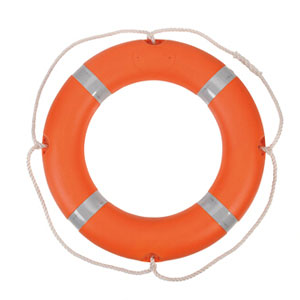
SOLAS Lifebuoy Ring
Weight: 2.5kgs or 4.3kgs
Certificates: EC/CCS/ZY
Material: HDPE
Max Drop Height: 80M
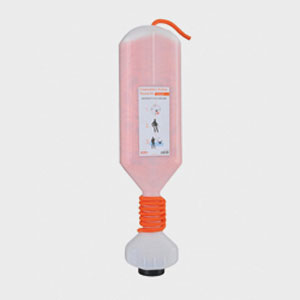
Floating Lifeline
Diameter: 8mm
Length: 30M
- Material: Polypropylene
It can be equipped with floated shell
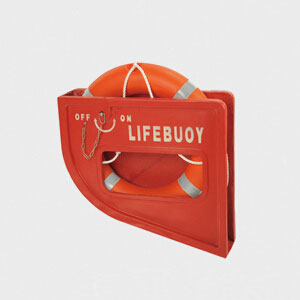
Lifebuoy Quick Release Device
- Material: Fiber reinforce plastic
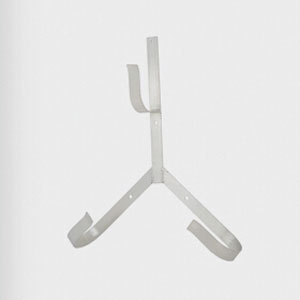
Lifebuoy Rack
Material: Carbon steel
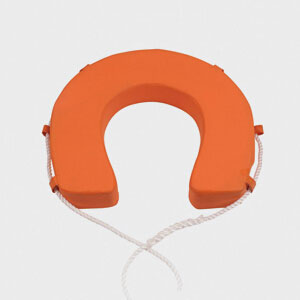
Horseshoe Lifebuoy
Outer diameter: 520mm
Inner diameter: 250mm
Thickness: 100mm
Surface Material: artificial leather
Buoyancy Material: EPE
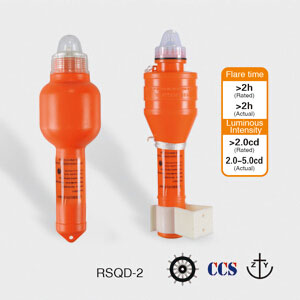
Lifebuoy Light RSQD-1
Comply with SOLAS standard
Illuminant: LED
Certificate: EC/ CCS/ ZY
Size: D85*235MM
Validity: 5 years
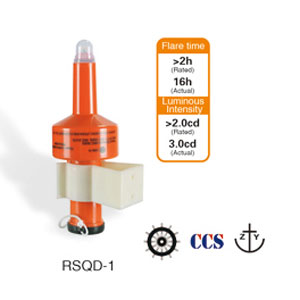
Lifebuoy Light RSQD-2
Comply with SOLAS standard
Illuminant: LED
Certificate: EC/ CCS/ ZY
Size: D90*350MM
Validity: 5 years
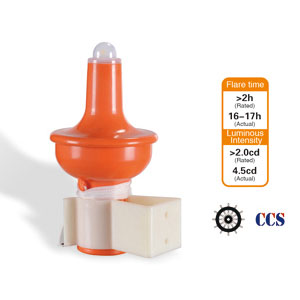
Lifebuoy Light RSQD-Ex
Comply with SOLAS standard
Illuminant: LED
Certificate: EC/ CCS/ ZY
- Size: D100*190MM
Validity: 5 years
Lifebuoy Ring – The Ultimate FAQ Guide
Welcome to the FAQs Guideline of Lifebuoy Ring. This guide features the frequently asked questions about Lifebuoy rings, their usage, their types, colors, and how to throw them to casualties in the water.
You’ll be able to learn how to inspect the lifebuoy rings if they are up to the SOLAS requirements and know when the health of the lifebuoy ring is deteriorating.
Let’s begin reading!
1. What Is A Lifebuoy Ring?
Lifebuoy Rings are one of life-saving equipment that is dropped in the water to rescue someone that went overboard accidentally.
A lifebuoy ring is a distressed orange-colored, doughnut-shaped polyethylene tube thrown in the water to save a person from drowning. It is made up of inherently bind material that stays afloat and does not sink to the bottom.
Lifebuoy rings are automatically inflatable that makes them ideal for rescuing purposes. They have a good length of rope attached at the throwing end and a fine quality grip at the circumference of the lifebuoy ring.
Lifebuoy rings come in various sizes for children and adults. One can easily pick what is right under what circumstances. They usually come in orange color with reflecting tapes at four equidistant points on the ring. So, they are easily seen in the water.
Lifebuoy rings are mounted at ships and places that are more likely to have casualties from drowning accidents. They are stored at points that are accessible under emergencies. Lifebuoy rings are easy to use; they weigh about 2.5kg to 6kg that makes them easily throwable.
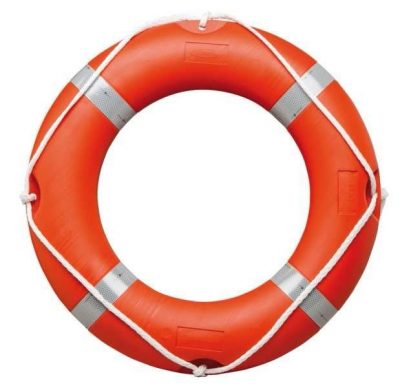
Figure 1 Orange Lifebuoy Ring
2. What Is the Purpose of a Lifebuoy Ring?
Lifebuoy rings are lifesaving equipment that is used for the purpose of saving casualties that fall overboard accidentally.
They are mounted on each side of ships, accompanied by a lifesaving boat and a place that has a high tendency of having casualties falling into the water.
They are thrown carefully a little further from the victim so that it does not hit them or get them injured. The ropes are then pulled until the ring is at a position where it can be grasped. Once made sure the person is holding the grab line, the rope is pulled towards the dry surface.
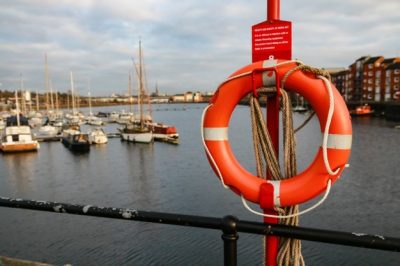
Figure 2 Orange Lifebuoy Ring Purpose
3. How Do You Use Lifebuoy Ring?
Lifebuoy rings are attached to a 30meter rope. One end is knotted to the source it is attached to, that can be the cockpit of ships or the dry land, and the other end is knotted on the ring, forming a fine grip.
The person helping the casualty shouts at them, and the lifebuoy ring is thrown at a distance that it does not hit the person that needs to be saved. Once made sure that the casualty is holding the grip line of the ring, the thrower starts pulling the rope towards himself.
4. What Is SOLAS Requirement for Lifebuoy Rings?
The SOLAS requirements are; at least one lifebuoy ring is to be attached at each end of the boat, accompanied by life floats. Lifebuoy rings are tied in a manner that can be released easily in case of emergency.
The inner diameter and outer diameter of the lifebuoy ring should be 400mm and 800mm, respectively. The measurement cannot fall below or rise beyond the mentioned measurements.
Lifebuoy ring should be capable of upholding at least 14kg up on the surface for approximately 16hours continuously. There should be at least two lifebuoy rings at each side of the boat, with a rope of length 30 meters and more.
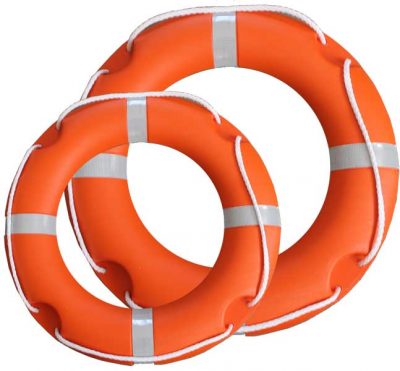
Figure 3 SOLAS requirements of lifebuoy ring
5. What Are the Different Lifebuoy Ring Related Products?
- Lifebuoy lights
- Floating Lifelines
- Lifebuoy racks
- Lifebuoy rescue tube
- Lifebuoy quick release device
- Life float
- EVA lifebuoy
- Rescue can
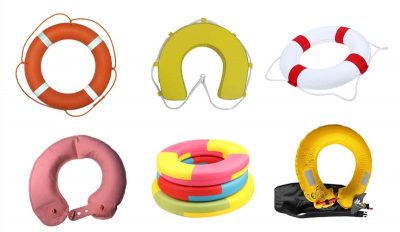
Figure 4 Products related to lifebuoy ring.
6. What Are the Specifications of a Lifebuoy Ring?
Made from polyethylene, lifebuoy rings are of a vibrant color that can be easily visible in the dark blue water.
The inner diameter and outer diameter are 400mm and 800mm, respectively, with a body thickness of 13cm.
Lifebuoy ring should be capable of upholding at least 14kg up on the surface for approximately 16hours continuously.
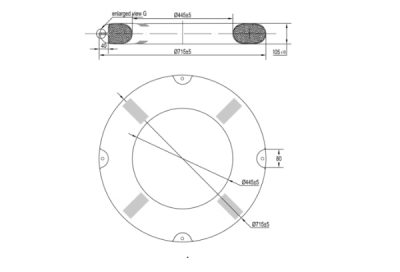
Figure 5 Specification of lifebuoy ring.
7. What Is the Property of a Lifebuoy Ring?
Lifebuoy rings are made up of high-density polyethylene, which makes them zero water absorbent and highly resistant to wear out in shorter terms.
Lifebuoy rings are usually exposed to the sun and, under certain circumstances, are exposed to fire too. They are made to survive the fire, even if thrown in it for 20 continuous seconds.
8. What Is the Diameter of a Lifebuoy Ring?
According to SOLAS – The International Convention for the Safety of Life, an international maritime treaty that sets minimum safety standards, the inner diameter of the lifebuoy ring should be 400mm minimum and above, weighing about 2.5kg.
Whereas the outer diameter of the lifebuoy rings should be around 800mm minimum and can above, weighing about 4kg.
9. What Are the Certifications of Lifebuoy Ring?
Here are some common certifications of lifebuoy rings:
- MED CERTIFICATION
Lifebuoy rings are certified by Marine Equipment Directive – MED because they are lifesaving appliances, specifically used under emergencies at Marine. - CSS CERTIFICATION
Another certification for Lifebuoy rings is CCS – China Classification Society. They offer classification survey services for marine-related industrial products. - GL CERTIFICATION
DNV GL, which is an accredited certification body. They provide certificates after qualifying for clinical excellence. - ISO CERTIFIED
ISO certificates are provided to the companies that are performing with respect to international standards of operation.
10. Are Lifebuoy Rings Available for Kids?
The lifebuoy rings come in different sizes of adults and children. But the one that compliant with to SOLAS requirement is one weighing 2kg minimum and a maximum of 6kg. The one with 24-27” is ideal for children that might fall in the water.
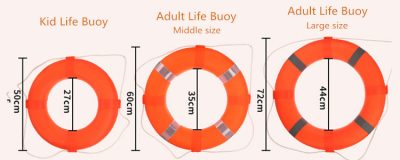
Figure 6 Lifebuoy Rings Available for Kids
11. What Is the Price Range of Lifebuoy Ring?
The average price range of Lifebuoy rings ranges about the US $ 8-15 / Piece if the quantity required for the lifebuoy rings is less. If the quantity required for lifebuoy is in bulk, it starts from $0.98 per piece.
12. Who Are the Best Manufacturers of Lifebuoy Ring?
Most of the manufacturers that are certified from CCS, ISO, EMD, and GL are from China. China is the biggest manufacturers of Lifebuoy rings with a good range of colors and sizes.
13. What Is A Lifebuoy Ring Made Up Of?
It is made up of high-end quality plastic and polyethylene and filled up with polyurethane foam in a doughnut-shaped tube. The foam and the tube are highly resistant to water and do not ingress until damaged.
14. How to Inspect A Lifebuoy Ring?
Lifebuoy can be inspected by;
- Ensuring that the foam is well coated, and the plug covering the mouth of the filler is tucked under the reflective tapes.
- Ensure that the lifebuoy ring is not damaged
- Ensure that it is well-positioned and can be dropped instantly if needed.
- Ensure that the health of the lifebuoy ring has not deteriorated and would perform the same way as new if thrown in the water.
- Make sure the weight has not crossed its limit of the maximum weight that is 6kg.
15. Do Lifebuoy Rings Expire?
There is no exact date for the expiry of lifebuoy rings. They can be inspected with respect to these points.
- Ensure the plastic on the ring has been not deter by being exposed to the sun.
- Ensure the grab line is not damaged; it should be securely attached to the ring.
- Ensure that water hasn’t ingress the lifebuoy ring and resulting in exceeding the weight limit.
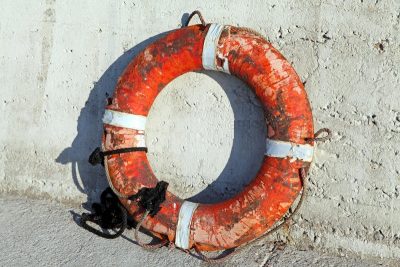
Figure 7 Lifebuoy Rings deteriorated.
16. How to Install and Use A Throw Able Lifebuoy Ring?
The lifebuoy rings are mounted on the ships. They are knotted in a way that makes them easy to drop in case of emergencies.
There are mounts available for the lifebuoys to be hung on. The Lifebuoy rings are placed on them at such positions that they are not opposed while being dropped down in the water.
The lifebuoy rings can be thrown by holding one end by left hand tossing the ring with the other, throwing the ring a little further from the person that you are throwing it to.
17. Are Lifebuoy Rings Recommended for Swimming Pools?
Lifebuoy rings are used under scenarios where there is a chance of drowning, whether they are still water or freshwaters.
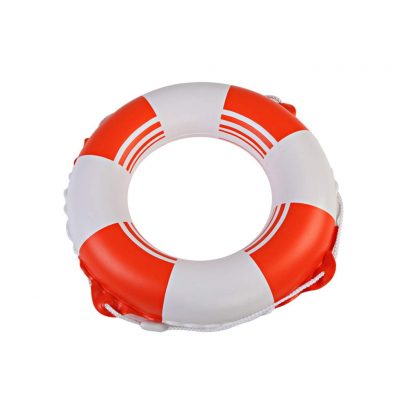
Figure 8 Swimming rings
Swimming pools can be bigger and deeper sometimes, causing a person/child to drown. Lifebuoy rings can come in handy under such circumstances, but swimming rings are ideal for pools.
18. How To Hang A Lifebuoy Ring?
There are mounts available for each size of the lifebuoy rings. The mounts are fixed on the ships or by the places where there is a high possibility of casualties.
You fix the mount and then set the lifebuoy ring on the mount in a way that it doesn’t face barriers while dropping them down into the waters.
19. How Do You Attach the Rope to The Lifebuoy Ring?
There are four points on the inner circumference of the lifebuoy ring. The rope has to be knotted on these equidistant four hooks. They are knotted in a way that can be grabbed by the person it is being thrown, known as the grab line.
The ring has another knot of rope that is for towing purposes, and it is knotted in a way that it is knotted tight in the interesting point of two knots grab a line of the ring.
20. How to Choose A Lifebuoy Ring?
There are a few factors that can help choose a lifebuoy ring;
If the lifebuoy rings are to be thrown at a longer distance and for a single person, the 24″ Diameter 600 measures about 2.5kg if the right buoy to choose.
Even though it is highly recommended to have lifebuoys placed where they are easy and quick to be thrown, but even if they are placed at a distance, they are lightweight and easy to carry.
If the lifebuoy ring is to be deployed to a limiting range and for a higher number of causality, the 30” Diameter Lifebuoy 750 is perfect. They are usually placed to be dropped vertically into the water.
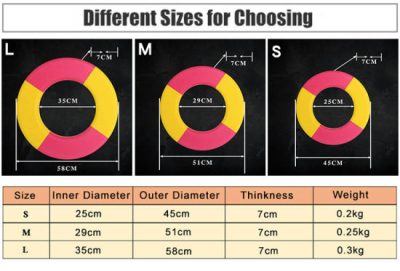
Figure 9 Choosing a lifebuoy ring.
21. What Are the Different Types of Lifebuoy Rings?
There are a few types of Lifebuoy rings that differ from another;
- LIFEBUOY, CAN-SB, 75 CM DIAMETER 2.5 KG
With a drop height of 60 meters, this type of lifebuoy is filled with close cells foam, rope, and reflecting tapes, weighing about 2.kg. - LIFEBUOY, CAN-SB, 75 CM DIAMETER 4.0 KG
With a drop height of 60 meters, this type of lifebuoy is filled with close cells foam, rope, and reflecting tapes, weighing about 4 kg.
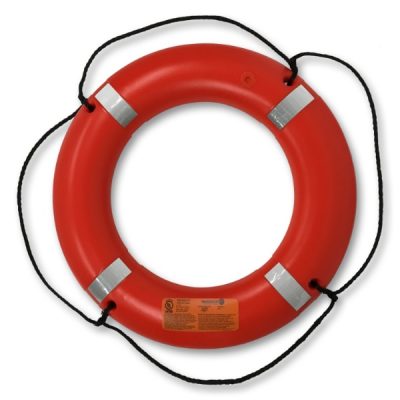
Figure 10 CAN SB lifebuoy.
- LIFEBUOY 2.5 KG, DATREX, DECK BUOY
With a drop height of 30 meters, this type of lifebuoy is made up of a high density of polyethylene and comes with a replaceable grab line, unlike other lifebuoy rings, weighing about 2.25kg.
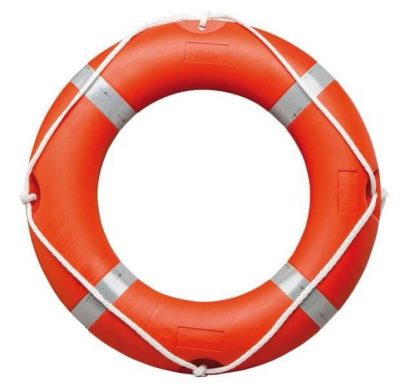
Figure 11 Datrex Deck lifebuoy
- LIFEBUOY 4.0 KG, DATREX, BRIDGE BUOY
With a drop height of 30 meters, this type of lifebuoy is made up of a high density of polyethylene and comes with a replaceable grab line, unlike other lifebuoy rings, weighing about 4.0kg.
22. What Is the Difference Between A Lifebuoy Ring and A Swimming Ring?
The main difference between a lifebuoy ring and a swimming ring is the material they are made up of. The swimming ring is made up of plastic, and the lifebuoy is usually made up of foam.
Swimming Rings are not as resistant to fire and water ingress as lifebuoy rings. As compared to the lifebuoy rings, swimming rings are way lighter and cannot be thrown accurately from the perspective of saving lives.
The swimming ring is more likely to get damaged and burst. The surface is slippery when wet that make it difficult to get a hold of the swimming ring.
23. What Are the Regulations of Lifebuoy Ring?
The location where the lifebuoy rings are kept should be in sight and within close proximity to where there can be a need to use it. Such a place would ideally be on both sides of a ship, a pathway near lakes, or by the sea.
There are ways of fixing them by mounting it on a post, rail mounting, or bolting it to a wall. A mounting kit is used to carry out the installation. It may contain other accessories depending on the preferred method of mounting.
It should be loose enough and provide a hassle-free way for users to lift the ring and throw it in the water.
24. Are Lifebuoy Rings Auto-Inflatable?
Lifebuoy rings are automatic-inflatable, which means they remain the way they are without losing the air that they are filled with. They will always get back to the form they were made in.
25. What Are the Advantages of Using A Lifebuoy Ring?
Great advantages come with the use of lifebuoy rings;
- They can be used to save many casualties at one time from drowning.
- They are easy to throw and light-weighted.
- They are easy to pull back.
- They are auto-inflatable that makes them remain the way they are.
- They are resistant to wear out early.
26. How to Throw A Lifebuoy Ring?
They have to get unmounted from the mounts they are hanging on or simply untie the knot. Throw the lifebuoy ring a little far from the causality and keep pulling till it reaches him.
Making sure the ring doesn’t hit them as it can end up getting them injured if so. Weighing about 2.5-4kg, lifebuoy rings can cause much damage if not used the right way.
27. In What Colours Lifebuoy Rings Available?
The international distress orange is the color for lifebuoy rings as it is easy to see this popping color during the day and night too, with a little diffraction of light.
The distress orange is also a color universally recognized for water safety lifebuoy devices.
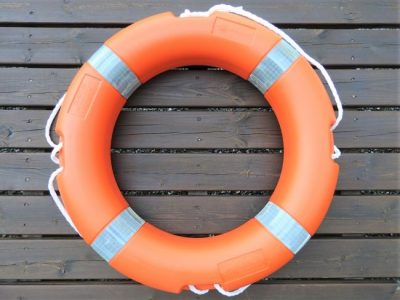
Figure 12 Orange color
28. How to Choose A Lifebuoy Ring Size for Yourself?
The size of a lifebuoy ring depends upon your needs and requirements. If you are sailing in the freshwater with a larger body of people, you tend to have more casualties than those traveling solo or in shorter groups.
In such cases, the 30” lifebuoy ring can come in handy. If not the case, a lifebuoy ring of diameter 24” is ideal.
29. What Is Type IV Ring Buoys?
The Type IV ring buoys are the lifebuoys that are not to be worn. They do not lift the person/causality from drowning.
Unlike other lifebuoy rings that can be worn, the IV ring buoys are used to grasp from one arm and paddling forward with the other in order to reach the dry surface.
The material used in the making of IV ring buoys is no different than other general-purpose lifebuoys rings, but they do not have space for wearing.
30. Are All the Lifebuoy Rings Available with A Rope?
Almost all Lifebuoy rings are attached to ropes, and the ropes are to be purchased with ropes and mounts. The length of the rope is to be approximately 30 meters and should be hung at a level of 2 heights from the water.
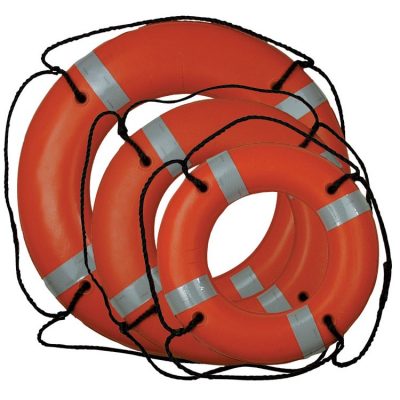
Figure 13 Lifebuoy with ropes
